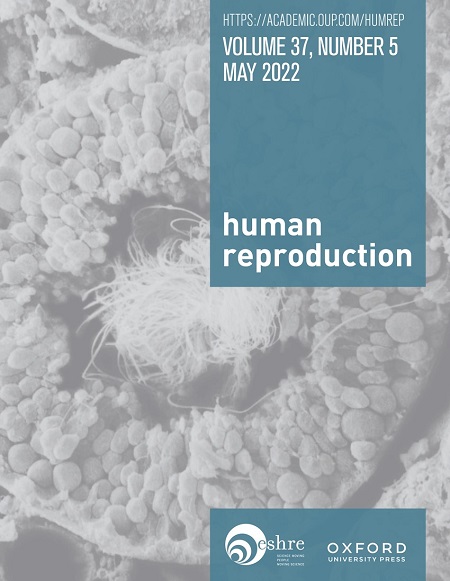生育治疗前的甲状腺功能测试:我们会同意吗?
IF 6
1区 医学
Q1 OBSTETRICS & GYNECOLOGY
引用次数: 0
摘要
甲状腺疾病是最普遍的疾病之一,尤其是在女性中,女性甲状腺功能减退和甲状腺功能亢进的患病率是男性的10倍。甲状腺激素在与排卵功能障碍和流产相关的低生育能力中起关键作用。虽然显性甲状腺疾病更常被临床诊断,但亚临床甲状腺功能减退症(SCH)提出了一个特殊的挑战,因为这些患者通常无症状,但其不良后果的风险高于一般人群。当外周甲状腺激素水平正常,但促甲状腺激素(TSH)水平升高时,可生化诊断为SCH;这种情况也可能与甲状腺自身免疫(TAI)有关。SCH和TAI可能保持潜伏、无症状或未确诊,但在卵巢刺激和妊娠期间,有TAI的女性,SCH可发展为明显的甲状腺功能减退。对TSH正常上限缺乏共识导致了SCH诊断的差异,因此潜在治疗的阈值也有所不同。因此,在寻求生育治疗的患者中,有不同的常规检查建议。来自英国甲状腺协会、美国甲状腺协会(ATA)、欧洲甲状腺协会(ETA)和皇家妇产科学院的指导建议使用TSH进行筛查,无论是否进行抗体检测,而来自国家健康与护理卓越研究所和最新来自美国生殖医学学会的指导则不建议进行常规检测。本文概述了与常规甲状腺功能检测相关的论述和各种建议,具体涉及妇女的低生育能力人群,并强调了目前在这一领域存在的意见分歧。人们热切期待ATA指南的更新,其中将包括生育能力低下的妇女,并将得到多个国际机构(包括ESHRE和ETA)的认可。本文章由计算机程序翻译,如有差异,请以英文原文为准。
Thyroid function testing prior to fertility treatment: will we ever agree?
Thyroid disorders are among the most prevalent of medical conditions, especially in women, with the prevalence of both hypo- and hyper-thyroidism being 10-fold more common in women than in men. Thyroid hormones play a key role in subfertility associated with ovulatory dysfunction and miscarriages. While overt thyroid disorders are more often clinically diagnosed, subclinical hypothyroidism (SCH) poses a particular challenge as these patients are usually asymptomatic while their risk for adverse outcomes is higher than in the general population. SCH is biochemically diagnosed when peripheral thyroid hormone levels are normal, but thyroid-stimulating hormone (TSH) levels are elevated; the condition may also be associated with thyroid autoimmunity (TAI). SCH and TAI may remain latent, asymptomatic or undiagnosed, but SCH can progress to overt hypothyroidism in women with TAI during ovarian stimulation and pregnancy. The lack of consensus on the upper limit of normal for TSH has led to variations in the diagnosis of SCH and therefore variations in thresholds for potential treatment. Consequently, there are variations in recommendations for routine testing in patients seeking fertility treatment. Guidance from the British Thyroid Association, American Thyroid Association (ATA), European Thyroid Association (ETA), and Royal College of Obstetrics and Gynaecology recommends screening using TSH with or without antibody testing while those from the National Institute for Health and Care Excellence and the latest from the American Society of Reproductive Medicine do not recommend routine testing. This paper outlines the discourse and varied recommendations related to routine thyroid function testing, with specific reference to the subfertile population of women, and highlights the discord in opinions that currently exist in this arena. An update of the ATA guideline, which will include women with subfertility and will be endorsed by multiple international bodies (including ESHRE and ETA), is eagerly anticipated.
求助全文
通过发布文献求助,成功后即可免费获取论文全文。
去求助
来源期刊

Human reproduction
医学-妇产科学
CiteScore
10.90
自引率
6.60%
发文量
1369
审稿时长
1 months
期刊介绍:
Human Reproduction features full-length, peer-reviewed papers reporting original research, concise clinical case reports, as well as opinions and debates on topical issues.
Papers published cover the clinical science and medical aspects of reproductive physiology, pathology and endocrinology; including andrology, gonad function, gametogenesis, fertilization, embryo development, implantation, early pregnancy, genetics, genetic diagnosis, oncology, infectious disease, surgery, contraception, infertility treatment, psychology, ethics and social issues.
 求助内容:
求助内容: 应助结果提醒方式:
应助结果提醒方式:


